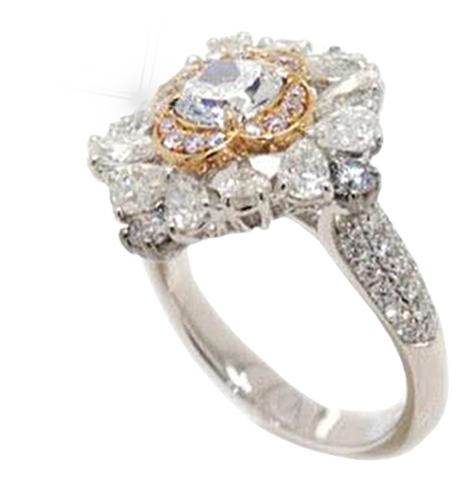
Blue Diamonds
About Blue Diamonds:
A truly pure diamond is made of pure carbon, and colorless. When a diamond has a color, it’s because of impurities mixed in with the carbon, or defects in the structure of the gem. But while slight discoloration makes a diamond less valuable, intense coloration—that is, when the hue is distinguishable as a color, instead of just looking slightly off from clear—is a valued characteristic.
For blue diamonds, the color comes from boron trapped in the crystal’s structure. They’re rare, with only about one in 200,000 diamonds showing a bit of blue, and far fewer displaying deep color.
How does the presence of boron create such stunning color? Clear diamonds are clear because the carbon atoms in them have no free electrons. That is to say, since a carbon atom has four electrons available for forming bonds, all four of its electrons get used up in the rigid, lattice-like structure that is diamond, where each carbon atom bonds with four neighboring ones. In this setting, visible light passes right through.
Boron atoms are close enough in size to carbon that some of them can easily take carbon’s place in that rigid structure. But boron has only three electrons available for bonding. This means that, wherever a boron atom is found in a diamond, one of its four carbon neighbors will have an unused electron. This absorbs red light. So white light coming through a boron-tainted diamond will come out blueish. You don’t need a lot of boron to make that happen—there are probably just a few boron atoms per million of carbon in the 45.5-carat “Hope” diamond, the most famous blue diamond.
But blue diamonds are far from the rarest: While they’re more uncommon than yellow diamonds, which have nitrogen in them, they lose out to green, black, pink, orange, purple, and red. Green diamonds are probably formed when natural radiation in the surrounding rock causes defects in the crystal structure. Pink and red diamonds are rare—a true red hue is the rarest of all. These gems are thought to be colored as they’re pushed up to the surface of the earth. The stress distorts the lattice structure, trapping electrons in a way that makes them absorb higher-frequency light (such as blue) and produce that reddish color.

